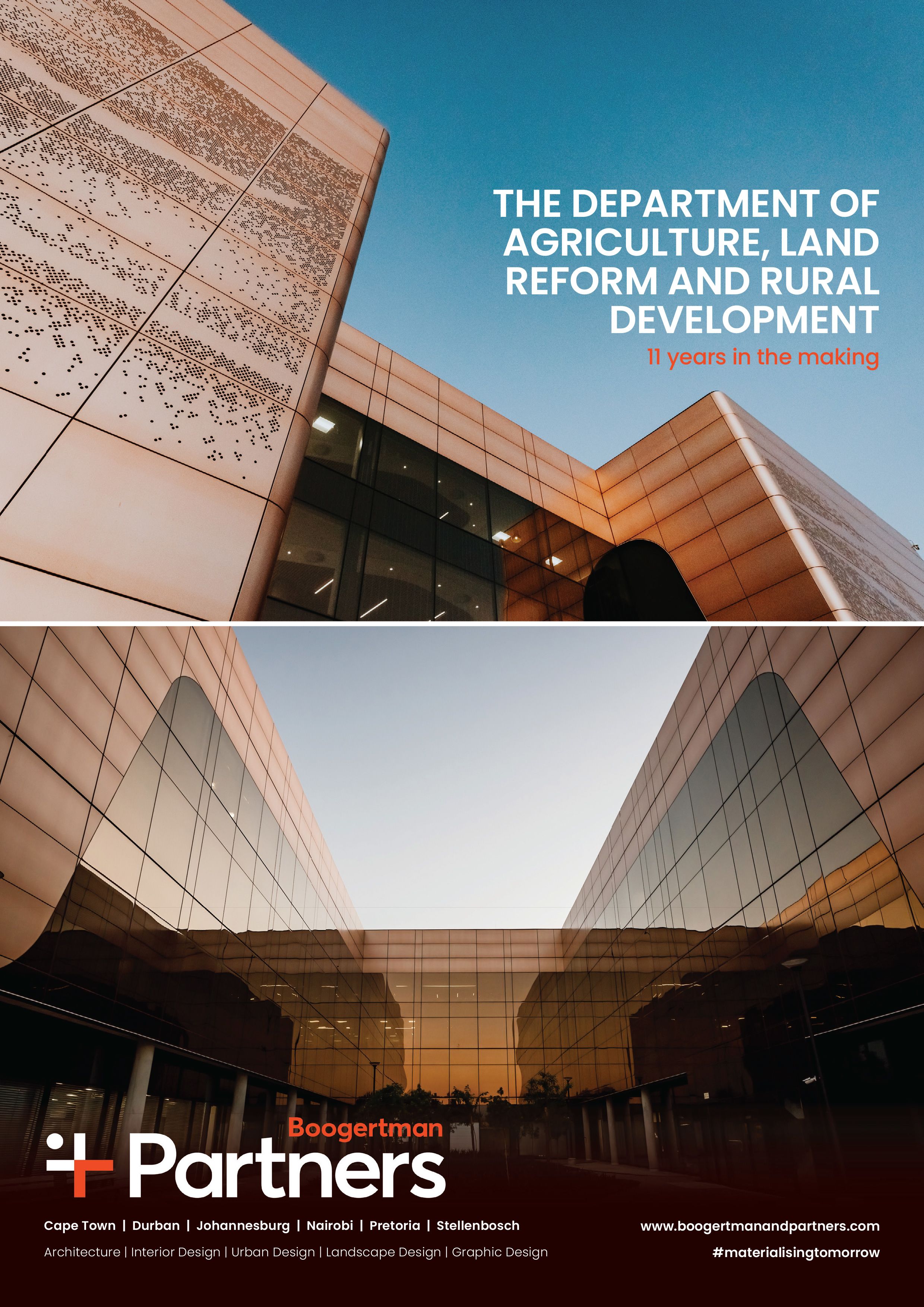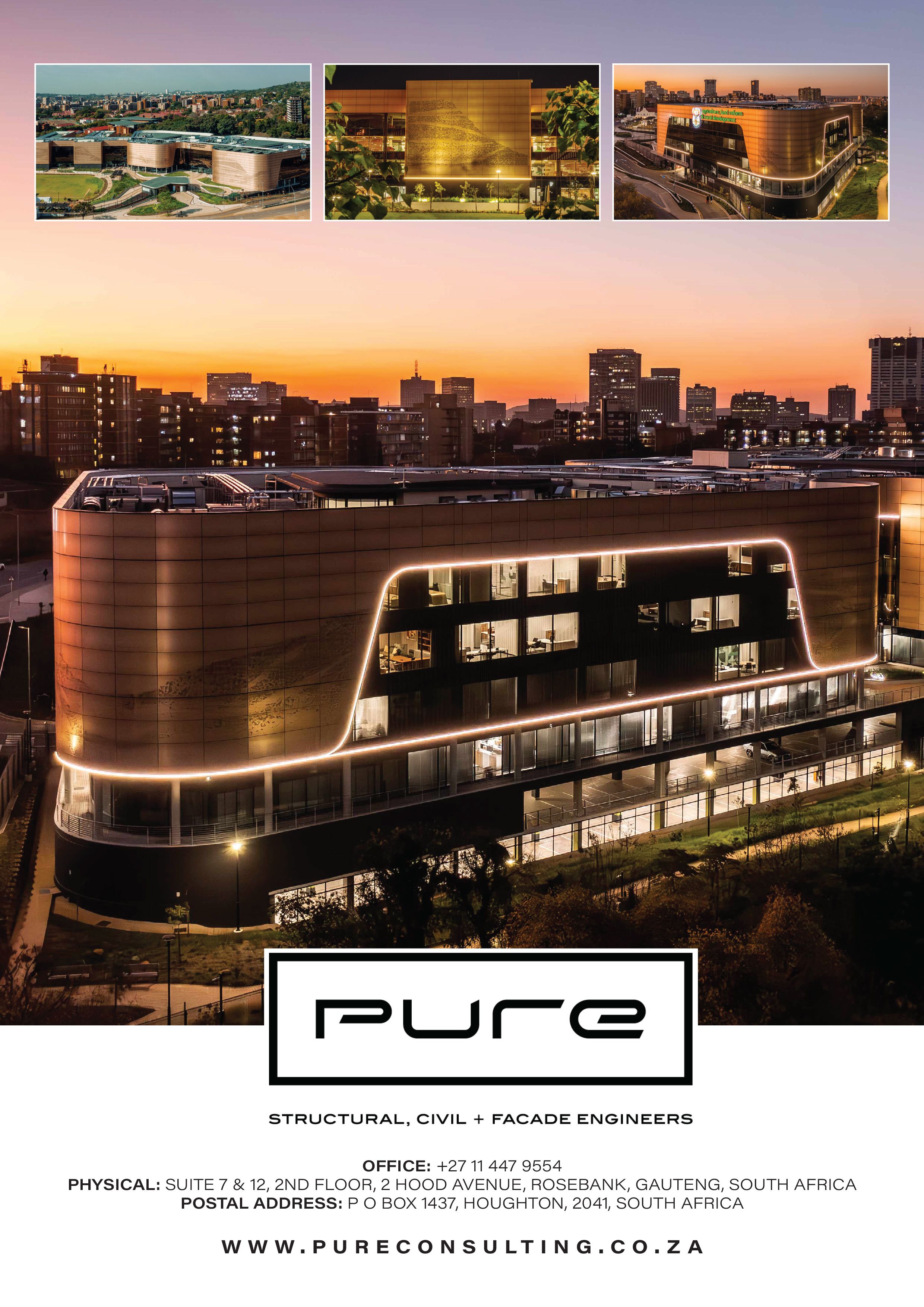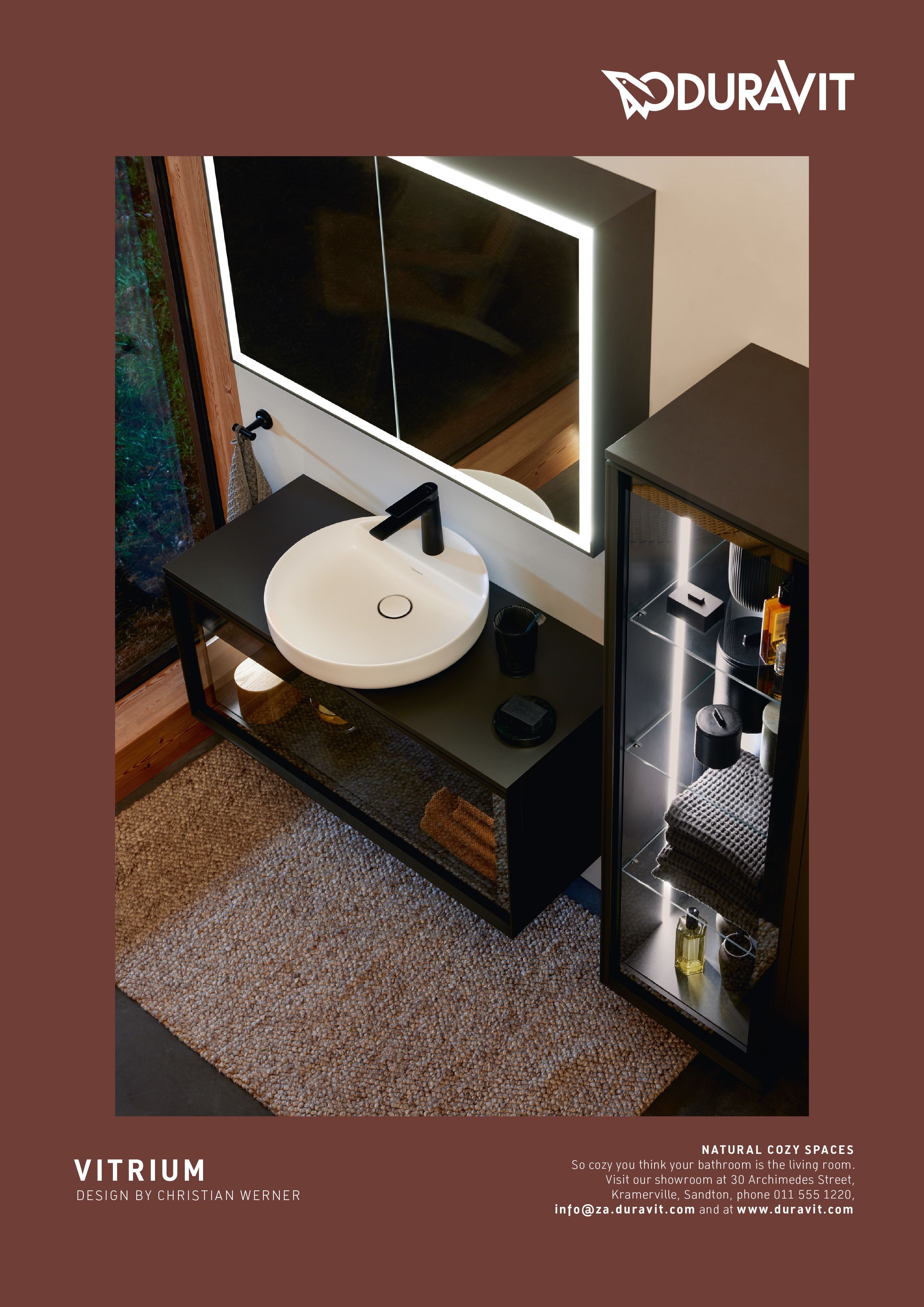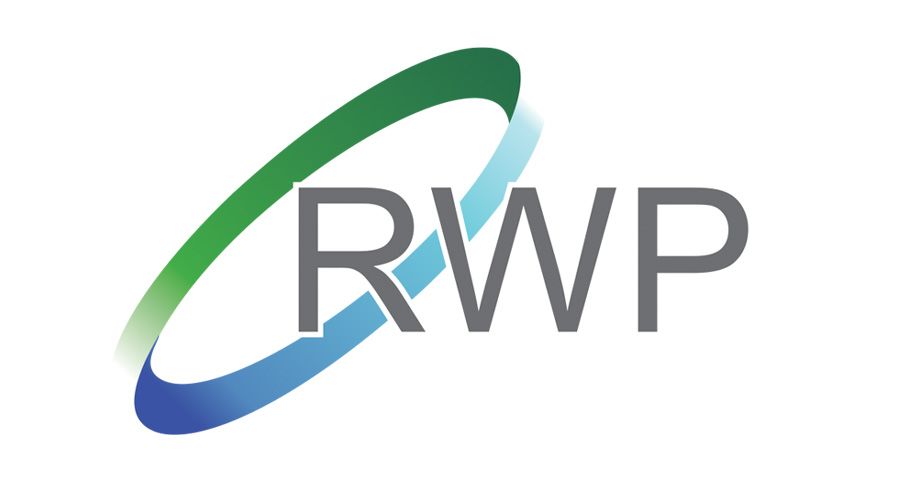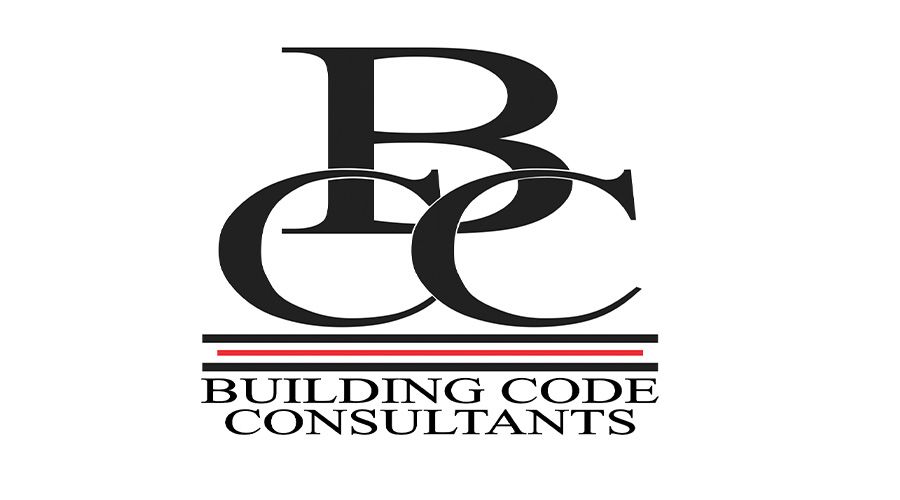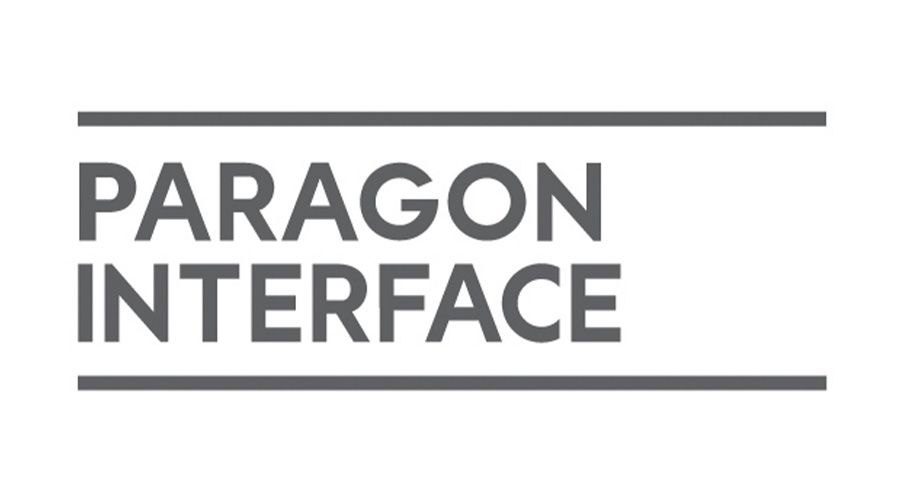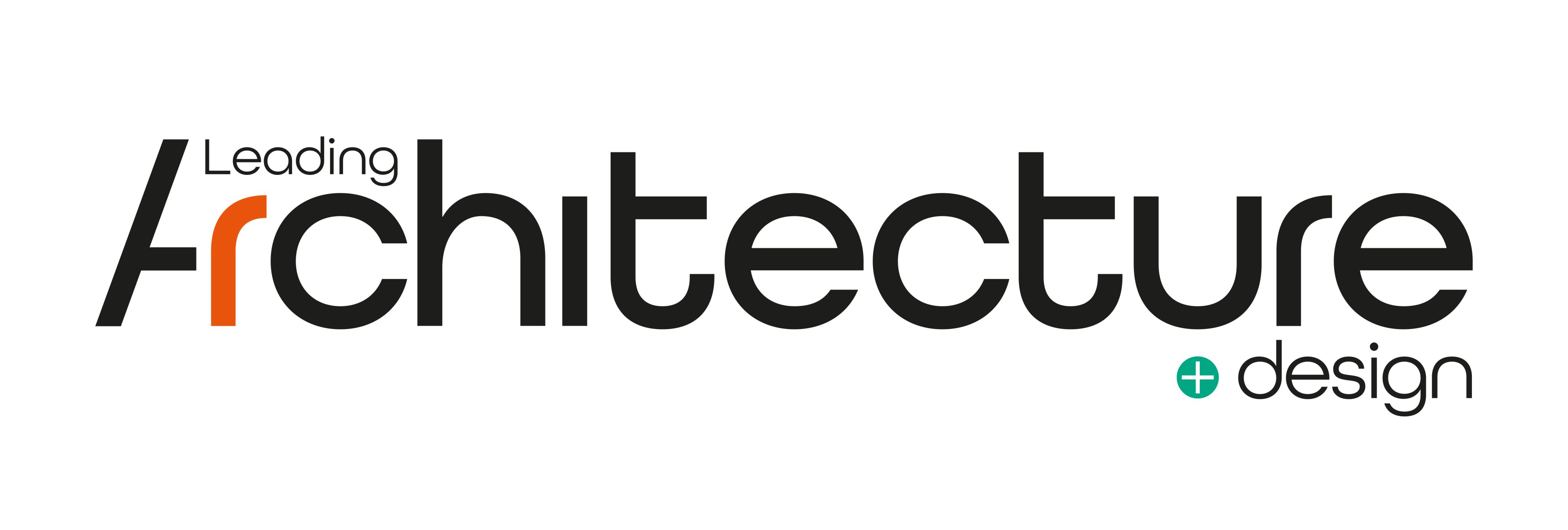Moving mountains
Boogertman + Partners has completed a new headquarters for the Department of Agriculture, Land Reform and Rural Development (DALRRD) in Pretoria, taking inspiration from SA’s varied landscapes and topographies to create an inclusive architectural landmark.
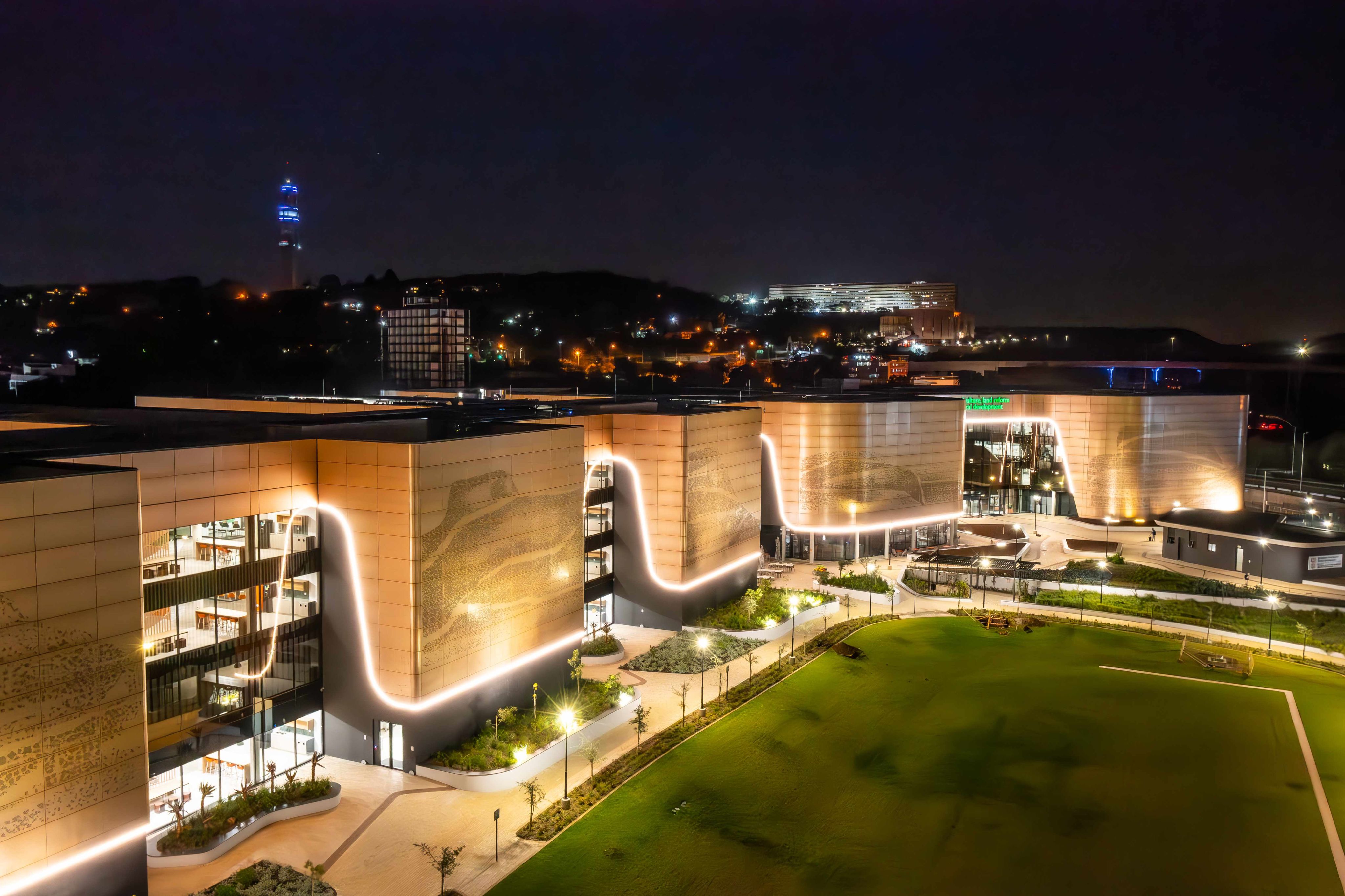
The new office for the Department of Agriculture, Land Reform and Rural Development (DALRRD) in Pretoria is designed not only to create a new home for the department that supports its values and ways of working, but also to create an inclusive environment that embodies the department’s mandate to “secure a better quality of life for all”, especially through the foundational principle that “all people in the country … have equal right to the land”.
Andre Wright, director of architectural firm Boogertman + Partners (B+P), who oversaw and developed this project over 11 years, says that the central design concept arose from the many landscapes, patterns of urban development and rural environments of the South African landscape. The department’s central concerns include agriculture, forestry, rural development and land reform – and at the heart of all of these, Wright points out, is the land itself.
The brief required a building that would express a fresh, progressive image for the department, which would also be inclusive, welcoming and hospitable to any part of the country’s population, remaining non-partisan, unbiased and unifying, without preference to any group.
Wright notes that B+P’s approach involved designing the building “from the inside out”, first understanding how the DALRRD functions, its working culture and values, and translating that into a spatial arrangement. The space planning was informed by the need to create light, open, friendly spaces with wide corridors and staircases with strong lines of sight, and a sense of coherence, connection and communication between them.
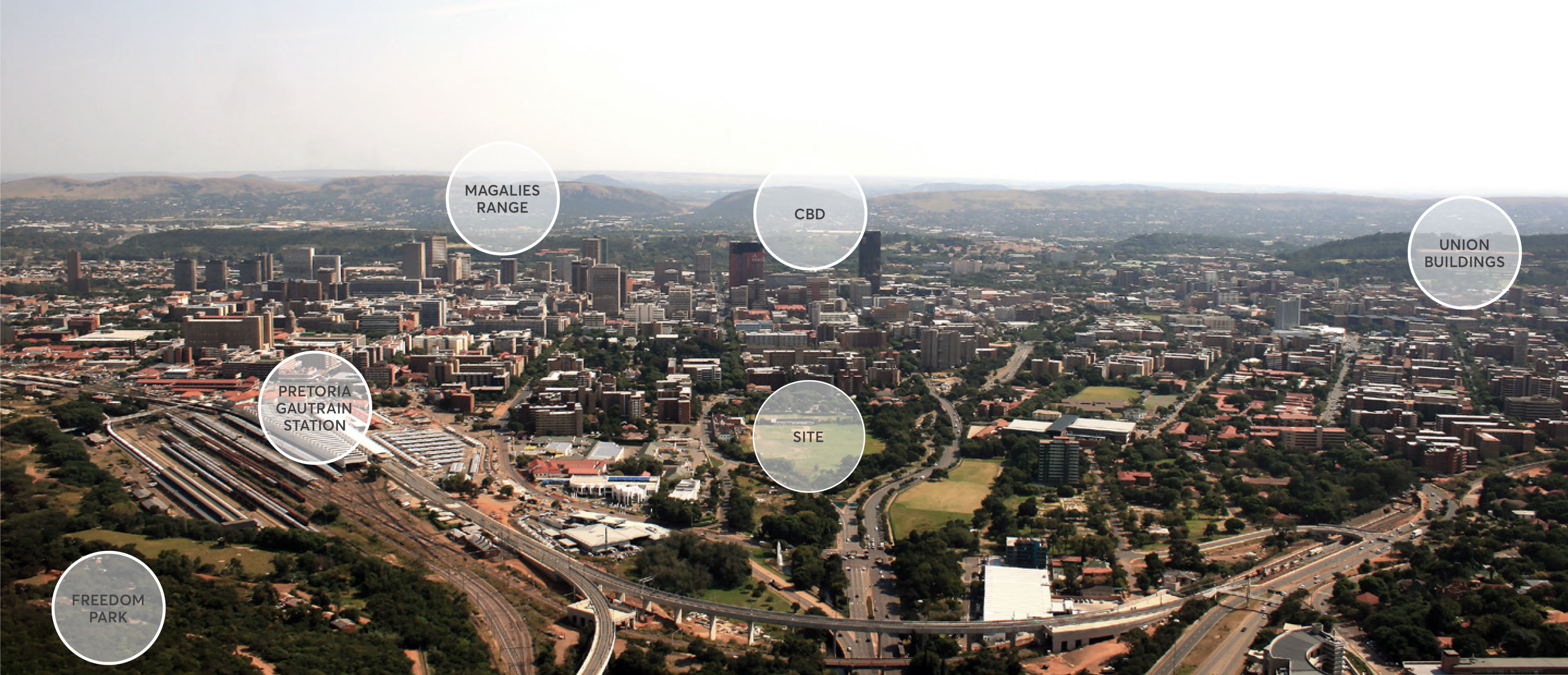
The form of the building was dictated largely by several contextual factors, including the presence of the Magaliesberg mountain range on the horizon, as well as the more immediate presence of the Apies River, which borders the site and gives it its distinctive shape. Various heritage restrictions concerning existing buildings and other features on the site also affected the space available for development.
The building is long and low-slung, hugging the ground in deference to the distant mountains and the scale of the city around it. It has a curved central spine that follows a bend in the river, linking five connected “wings” like “beads on a string”, as Wright puts it. The organic shapes of the nodes appear as stylised or abstracted landforms themselves. The functional aspects of the building are designed according to the well-established arrangement of a podium base that punches down to the basement with services and parking, providing easy accessibility.
The distinctive identity of the building, however, is quite literally “wrapped” around it in the form of a shimmering golden façade featuring a large-scale artistic representation of aspects of the diverse topographies around the country. Prominent landscape features, such as mountain ranges found in each of SA’s nine provinces, have been abstracted and fused to create a symbolic connection between the building and the land. The design of this external envelope draws, too, on uniquely South African cultural expressions and artforms, including beading techniques and textile designs, which have been reinterpreted in a a graphic language of linear and pointillist illustration techniques that are used to express the contours and planes of the landforms. This design was then rendered as a perforated pattern in the façade.
Each component of the unitised façade was individually machined and assembled to make up these remarkable artworks. A glass façade appears to slip behind the undulating shapes of the metallic screen as it rises and falls, accentuating the fluidity of the building’s curved shapes and forms.
The choice of a golden or copper metallic façade was inspired as much by the subterranean gold that is so central to SA’s relationship with the land as it is with the ochre colour of the soil in many parts of the country, which in turn are often used in vernacular architecture.
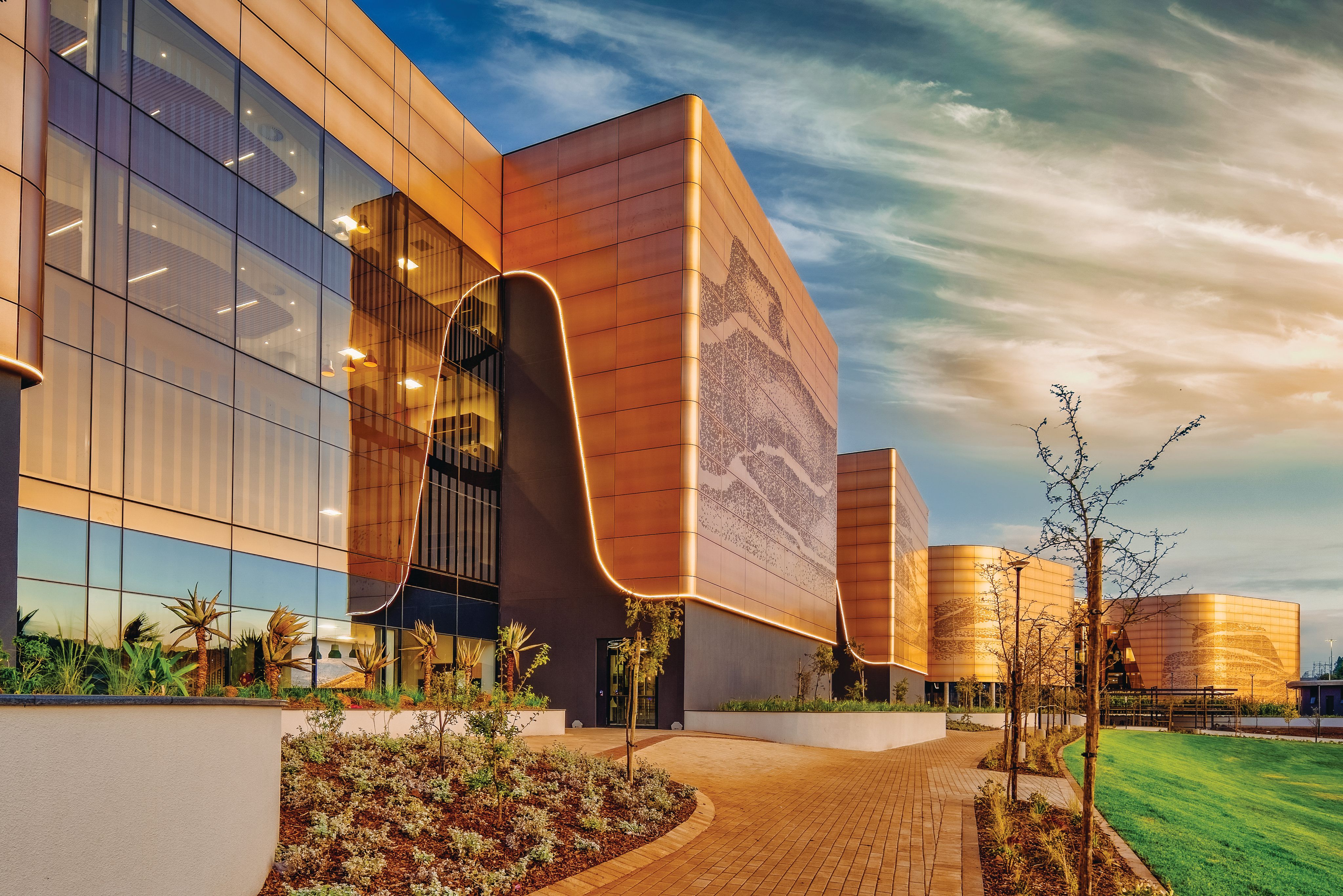
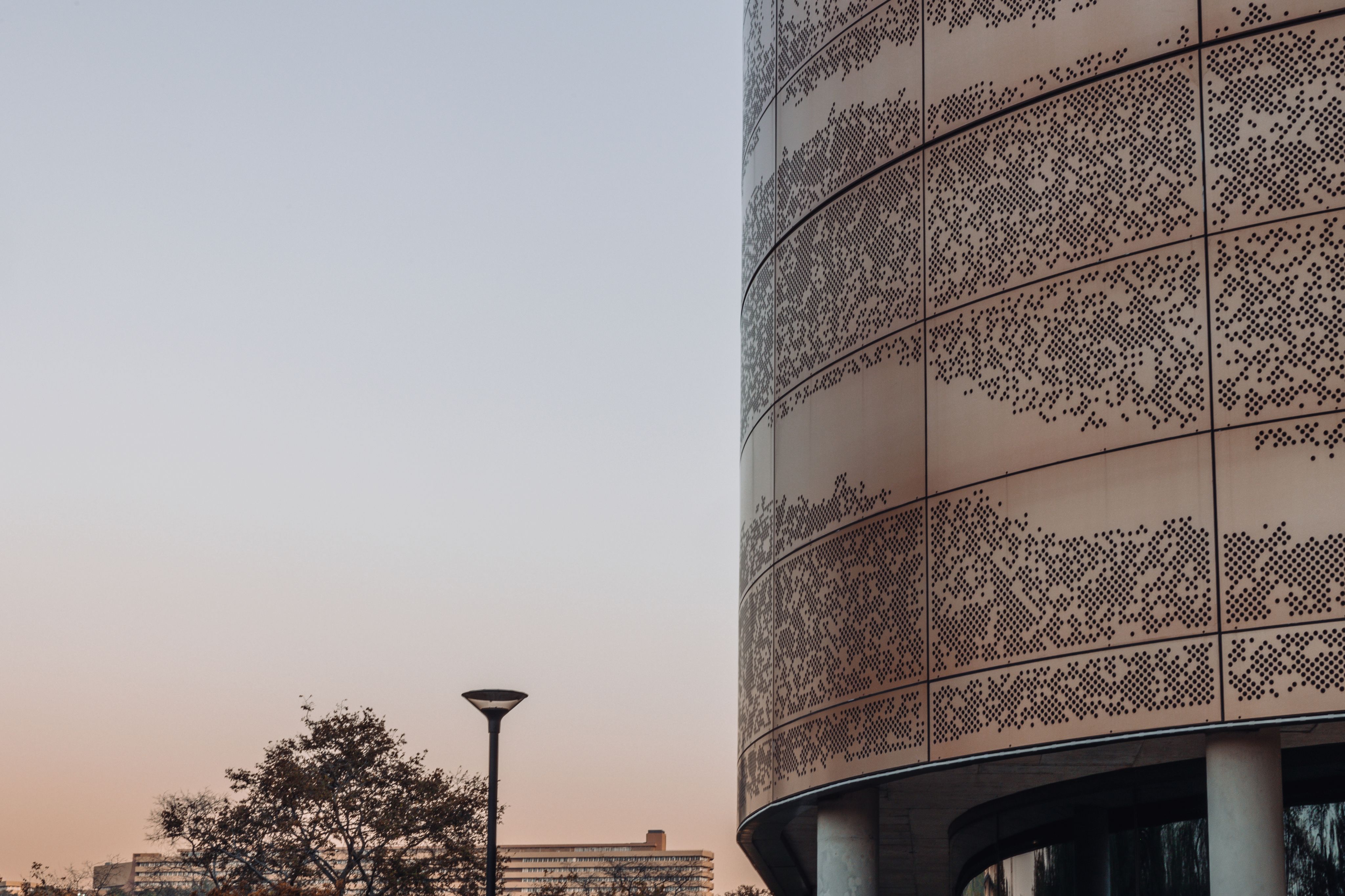
Wright, however, also points out that in its immediate context, the choice of colour was also prompted by the distinctive golden sunsets after Pretoria’s highveld thunderstorms, when the sky is “shimmering” and the atmosphere seems “washed clean”. The metallic finish responds beautifully to the changing light and creates a sense of movement as you circumnavigate the building.
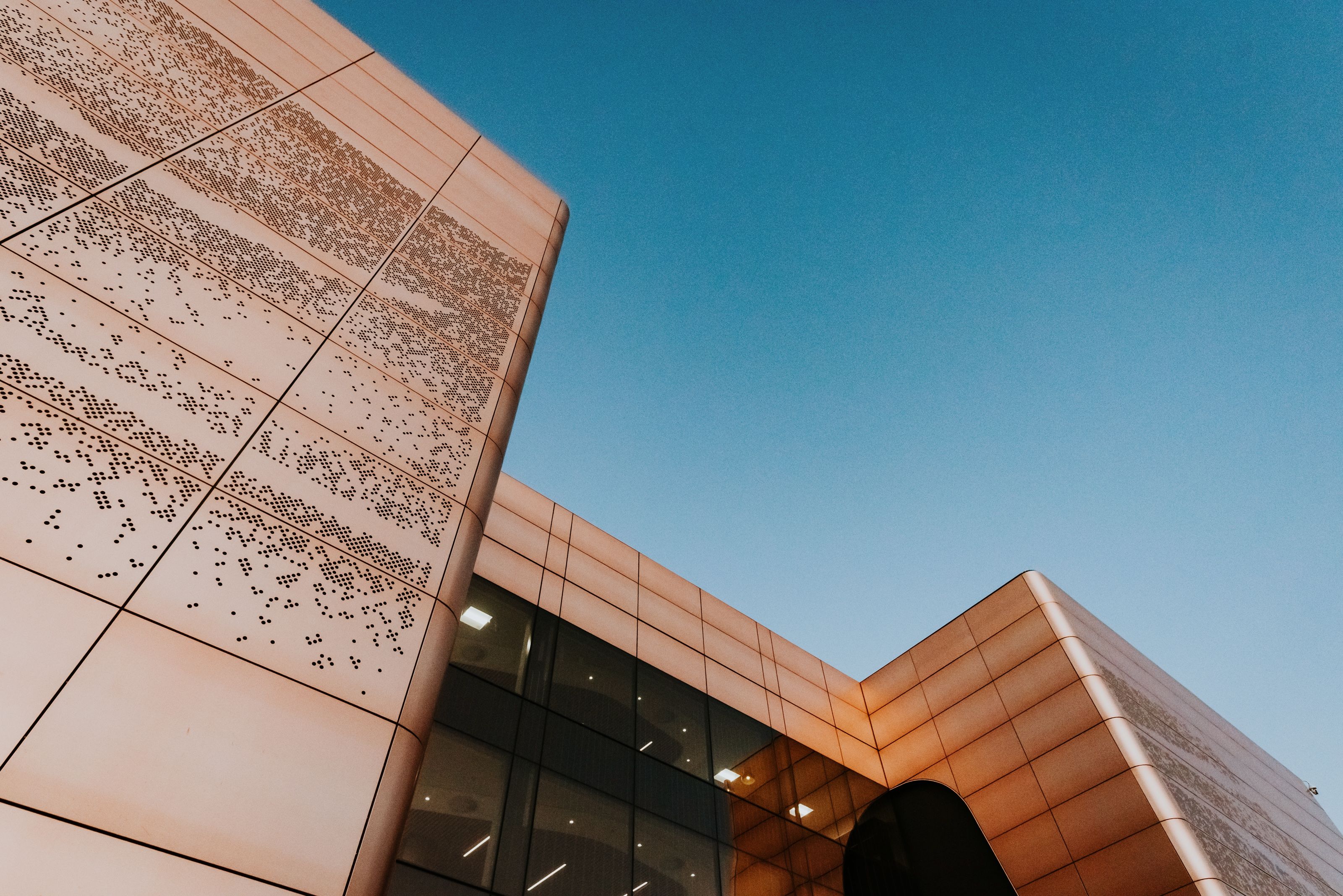
This symbolic connection to the land established in the façade design has been sustained in design elements throughout the interior and exterior of the building too. Nature’s forms and textures become the basis for the designs throughout the office spaces, from the interior atriums to details such as the bulkheads, ceiling finishes, floor tiles, timber screens, elements of the joinery and panelling, and even the shape of the planters and aspects of the landscaping.
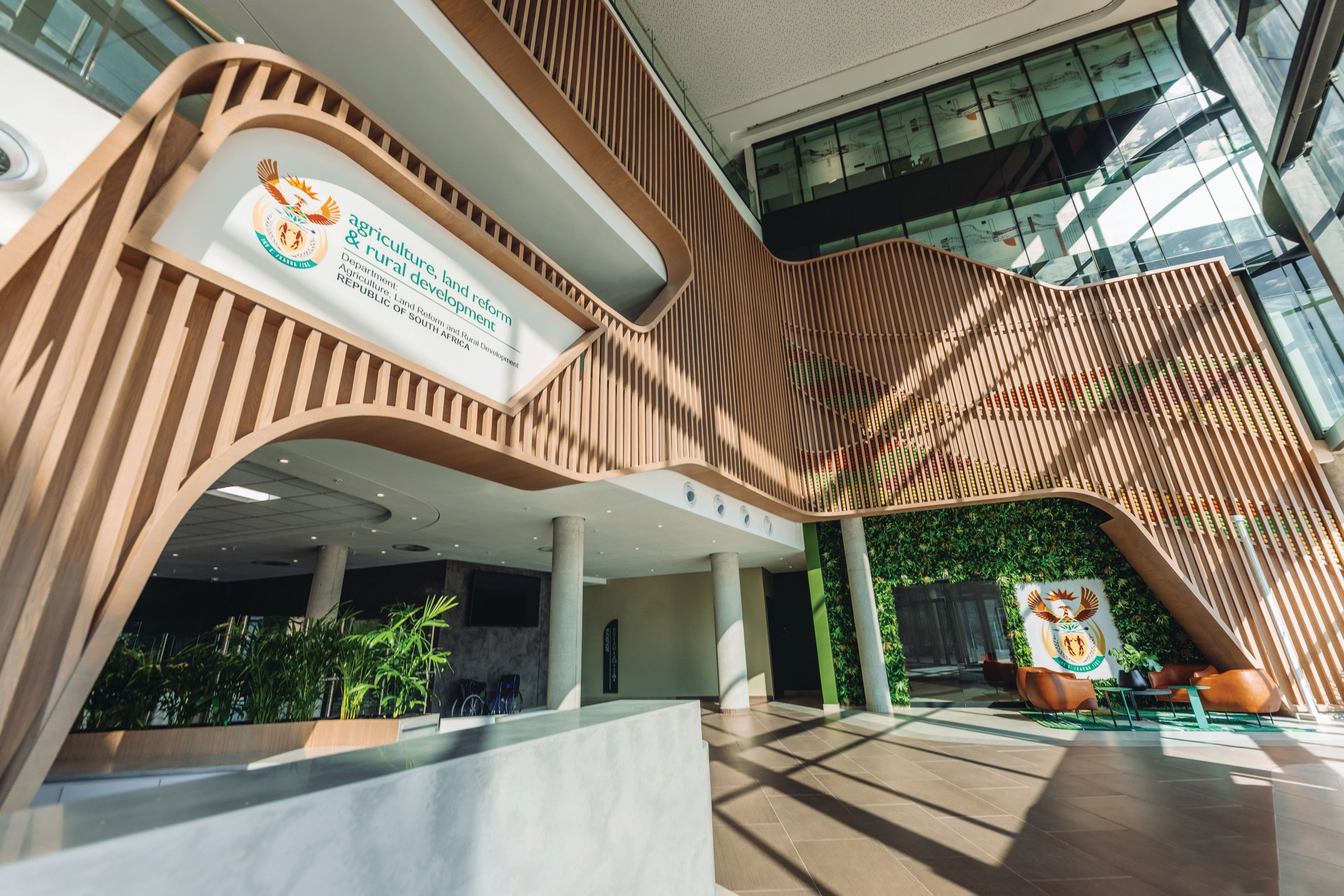
The remarkable designs of the vinyl decals and wallpaper that feature on walls in the various office spaces are also based on abstracted landscape features, particularly drawn from agricultural patterns that shape the landscape, which sustains the conceptual basis of the design. This reinforces the sense of inclusivity so central to the brief, while bringing a strong sense of design coherence and aesthetic harmony to the interiors.
Aerial progression of the build
The landscaping itself includes references to agriculture in its planting of locally grown crops and vegetables such as maize, which successfully integrates the base of the buildings with the site and becomes yet another symbolic expression of the department’s function and purpose.
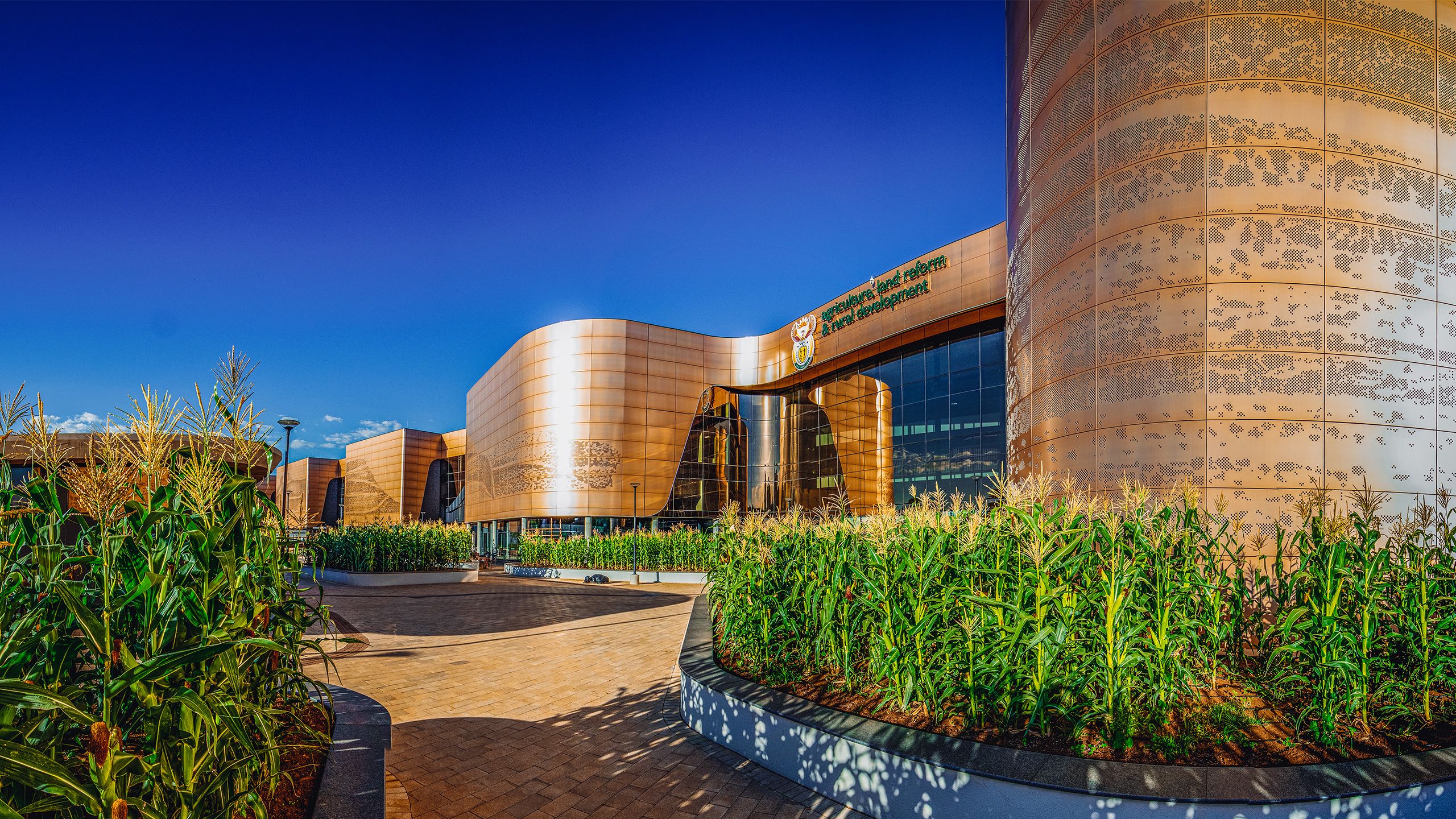
Wright notes that over the course of more than a decade of working so closely with the professional team and consultants on this project, powerful connections and bonds are formed. In fact, he says, it is only when the various teams working on a project of this scale pull in the same direction, and work with sympathy, common purpose and mutual understanding, that the results are achievable. However, when that happens, he says, it is possible to “move mountains”.
Given the design of the façade, drawn from mountain ranges around the country, the building does indeed become the embodiment of the ability of people working together to move mountains, and of the potential of the department itself.
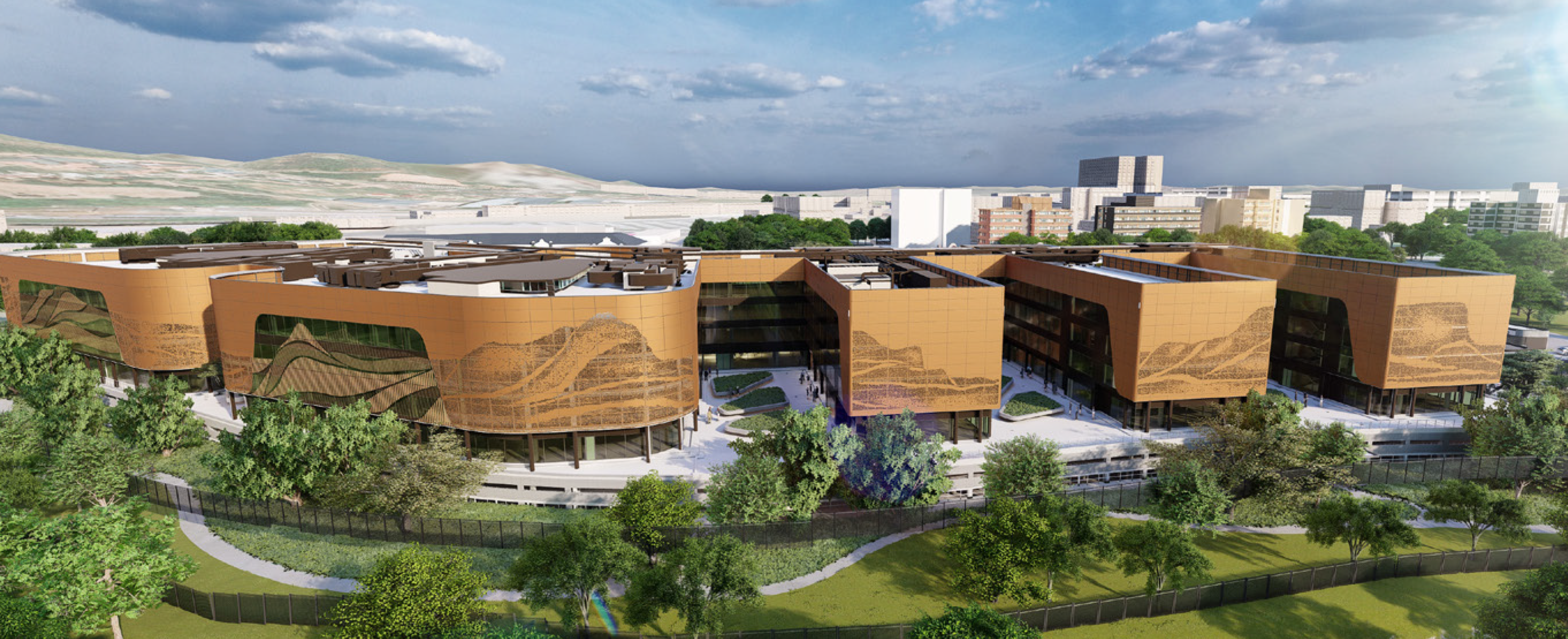
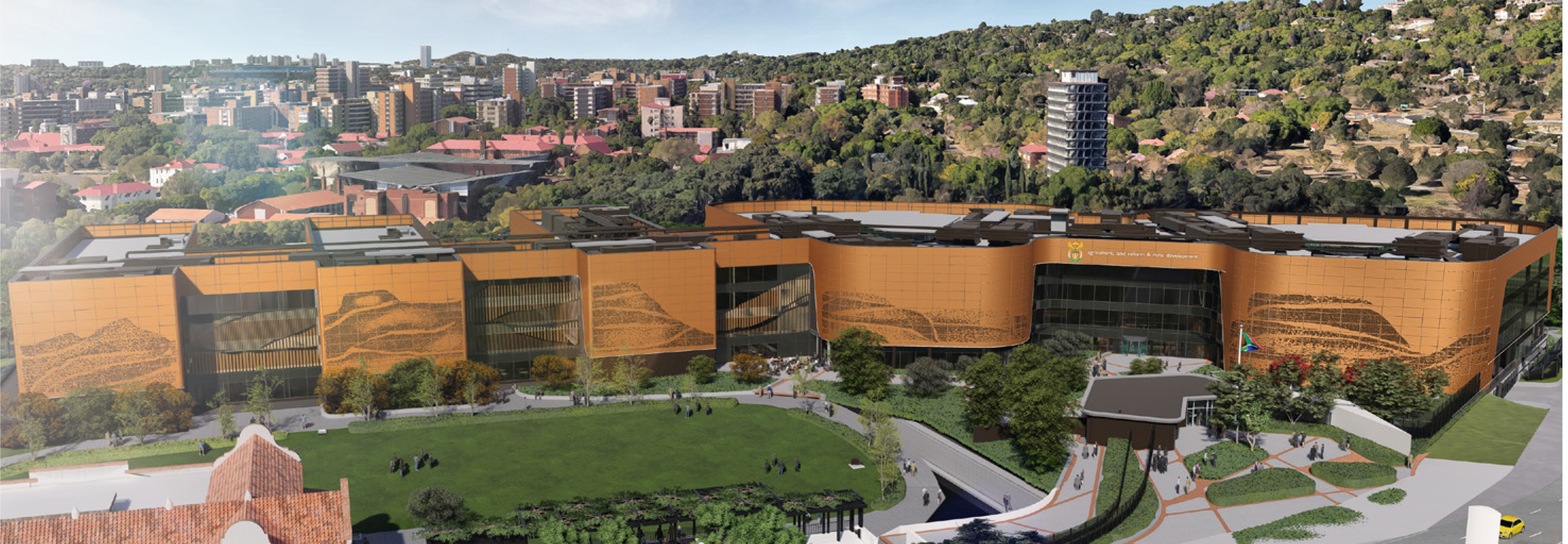
Professional team
Contractor: TBUC D&C
Design Construct: WBHO Architect: Boogertman + Partners
(Andre Wright, Stefan du Plessis, Salome Kruger, Hein Schönborn, Hatim Hassan, Dewald Green, Herman Jansen, Johan Nel and Marc Thomas)
Architect (Heritage): PLANDESIGN
Architect (Space Planning): Paragon Interface
Landscape Architect: The Landscape Studio
Project Manager: WBHO
Quantity Surveyor: AECOM
Structural Engineer: PURE Consulting
Civil Engineer: PURE Consulting
Electrical Engineer: RWP
Mechanical Engineer: DTM
Wet Service Engineer: DTM
Electronic Engineer: DTM
Fire Control Engineer: Building Code Consultants
Leading Architecture + Design is South Africa’s leading showcase of the country’s most exciting and innovative architectural and design projects. This bimonthly magazine speaks directly to South Africa’s architects, interior designers, engineers, construction companies and property developers. It also offers readers a showcase of the latest innovations, products and developments in the field of architecture and its related industries. The print edition of Leading Architecture + Design is complemented by a vibrant website, fortnightly newsletter and social media platforms.


